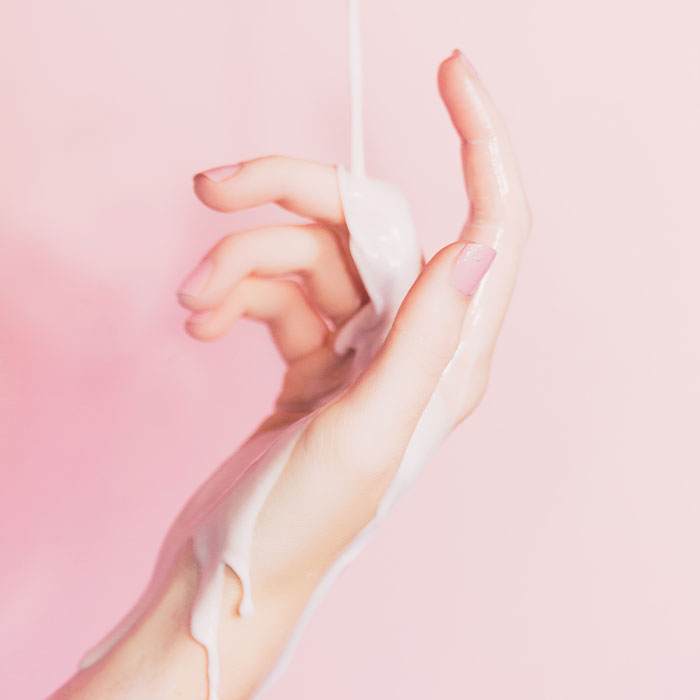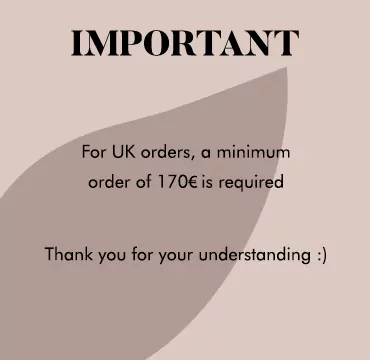MonCornerB green beauty charter
At MonCornerB, we have been selecting for you, since 2011, the best of organic and natural cosmetics!
Because we know how difficult it is to find one's way through the increasing number of green, clean, vegan or cruelty free beauty products and the various labels, we have set up our own charter.
Our objective? To offer you maximum transparency and serenity, so that you can buy your favourite natural beauty products with your eyes closed.
All the cosmetics you find on the e-shop are carefully selected: from the formula to the packaging, from the efficiency to the sensoriality, without forgetting the ethics of the brand... everything is scrutinized by our team of experts.
The result: organic and natural cosmetics that are as good for you as they are for the planet, so addictive that they will never leave your bathroom!
For us,Natural Beauty is above all about indulging yourself, taking care of yourself without stress or headaches.
There is no question of demonising controversial cosmetic ingredients, we have simply chosen to apply a precautionary principle by discarding all those that could be a source of concern for health or the environment, for which we are convinced that better (natural, of course) alternatives exist.

Parabens
What are they? Parabens are used as preservatives to prevent the proliferation of bacteria in cosmetics. Of synthetic origin, they are among the ingredients that have caused the most controversy in recent years, suspected of being endocrine disruptors. Although not all parabens represent the same health risk, we prefer to avoid them in general (just like BHT, another decried preservative).
How to recognize them? They are easy to spot, they are all names ending in paraben, such as methylparaben.
Silicones
What are they? Silicones are synthetic ingredients derived from silica, used in cosmetics to provide a pleasant feel and an instant softening effect to the skin and hair. Although they are inert and do not present any particular health problems, they are not very biodegradable and accumulate in the environment.
How to recognise them?These are generally the -one, -cone or -ane endings, such as dimethicone, cyclopentasiloxane
PEGs
What is this ? Polyethylene glycols (PEG) are used in the composition of many cosmetic products as humectants, emulsifiers or thickeners. Not very biodegradable, it is above all their production process that is problematic.
How to recognize them ? These are the names containing PEG- in the INCI list.
Note : We authorize in certain cleansing oils only (Leahlani and Odacité) the DI-PPG-2 MYRETH-10 ADIPATE which is not a PEG but a PPG ester. It is a very mild emulsifier of synthetic origin which allows oils to turn into milk when rinsed. It has a score of 1/10 (green) in the EWG Cosmetic Ingredient Benchmark Database and is therefore considered to be of no particular risk.
Phenoxyethanol
What is it ?Phenoxyethanol is a preservative that is thought to be endocrine disrupting, allergenic and toxic (although studies on it are also controversial). Present in very small doses in beauty products (less than 1%), we prefer to avoid it as a precautionary measure, in favour of other preservatives.
How to recognize it? It simply appears in the INCI list under the name phenoxyethanol.
Note : We have made an exception for a single product in our e-shop, the Anoint Antipodes eye contour, because phenoxyethanol is present there in the form of traces only in minute quantities (0.0095%) and above all that this is only temporary because the brand has undertaken to change this ingredient in future productions. It will therefore eventually disappear from the formula.
Mineral oils and waxes
What are they? Derived from petrochemicals, they have occlusive properties: they form a protective film on the skin's surface to protect it from water loss and dehydration. Although they are considered inert and well tolerated by sensitive skin, we prefer vegetable oils and butters, which have more interesting properties and a more sustainable manufacturing process.
How to recognize them? They are often called paraffin, paraffinum or mineral oil.
Chemical sunscreens
What are they? Synthetic UV filters, supposedly endocrine disruptors, allergenic and harmful to the oceans. We prefer mineral filters, 100% natural like zinc oxide or titanium dioxide, but always without nanoparticles.
How to recognize them? Among the most common: benzophenone, oxybenzone or octocrylene.

Nanoparticles
What are they? Tiny particles of the order of a nanometre, which are accused of passing through the skin barrier and accumulating in the body, without any knowledge of their long-term effects. They are often found in sunscreens in particular, where they make it possible to obtain a texture that is easier to spread and more penetrating (to avoid the famous white cast). You often ask us about titanium dioxide, which is present in many mineral sunscreens and natural make-up products. Don't panic, this is a 100% natural mineral ingredient that is only potentially problematic in the form of nanoparticles (30 to 50 nm in diameter), which is not the case with any of the cosmetics in our online shop. Organic labels such as Ecocert formally prohibit the presence of nanoparticles, and impose a particle diameter greater than 100nm.
How to recognize them? By the indication [NANO] which must be specified in the INCI list.
Update : Why does the mention [nano] now appear on certain organic sunscreens ? Due to a change in measurement technique since January 1, 2022 in France, mineral screens formerly qualified as "non-nano" are now identified as "nano": in the list of ingredients the mention [nano] appears alongside the titanium dioxide and zinc oxide. Currently, there is no standardized technique for evaluating nanoparticles, and measurement techniques are evolving. The new measurement method, called the SEM technique, is now the only one used by the DGCCRF - although there is no method imposed by the regulations - and it modifies the real state of the mineral screens before measurement. This does not change the formulas themselves, which retain total harmlessness. Numerous scientific studies have proven that the titanium dioxide and zinc oxide present in certified organic sunscreens are in the form of solid aggregates which remain on the surface of the skin, without any risk of transcutaneous passage (see study by no - skin penetration conducted by the Collectif des Solaires Bio, bringing together nine manufacturers of organic sunscreens). This is valid for all French organic sunscreen brands that are part of the Collectif des Solaires Bio, such as Les Laboratoires de Biarritz, whose compositions have not changed at all.
Some sulphates such as SLS, SLES and ALS
What are they? Sodium Laureth Sulfate (SLES), Sodium Laureth Sulfate (SLS) and Ammonium Lauryl Sulfate (ALS) are surfactants. They make it possible to obtain a nice lather in shampoos and shower gels, but can be irritating and drying for the skin and scalp. If we don't ban sulfates completely from the e-shop, we prefer surfactants that are gentler than these three.
How to recognize them? They are called Sodium Laureth Sulfate, Sodium Laureth Sulfate, and Ammonium Lauryl Sulfate.
Synthetic fragrances
What are they? Artificial fragrances designed in a laboratory to add sensoriality to cosmetics. The problem? In addition to being potentially allergenic, their manufacturing processes are often polluting and not very ecological. At MonCornerB we only choose natural perfumes, which are more respectful of the skin and the environment. Be careful, natural perfumes and essential oils also contain allergens, so if you are sensitive to them, opt for perfume-free formulations.
How to recognize them? The fragrance is indicated in the INCI list under the name Aroma, Perfume, or Fragrance, but it is not always specified whether it is a natural or synthetic fragrance.
Triclosan
What is triclosan? A synthetic preservative with antibacterial properties. A suspected endocrine disruptor, that is used less and less today but is still tolerated at strictly regulated doses. It is mainly found in certain toothpastes, deodorants and soaps.
How to recognise it? It is indicated under the name of triclosan in the INCI list

This charter is not exhaustive and may change as research and green chemistry progress.
Do you have questions about an ingredient? Ask it in comments!
Want to decipher the composition of your beauty products at home? Here are our reference sites:
On the same subject:
Comments

